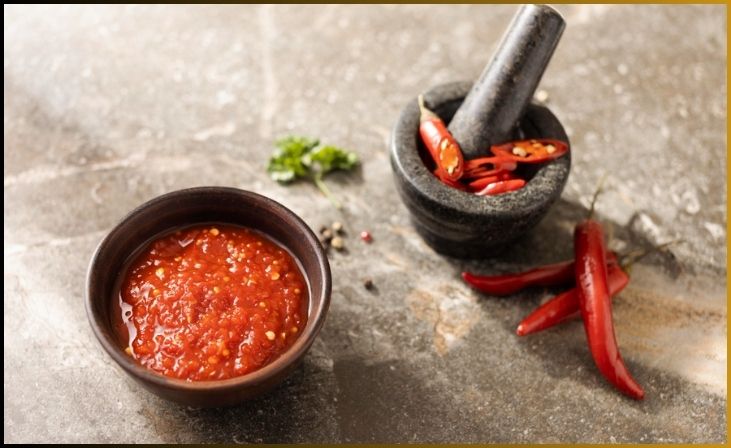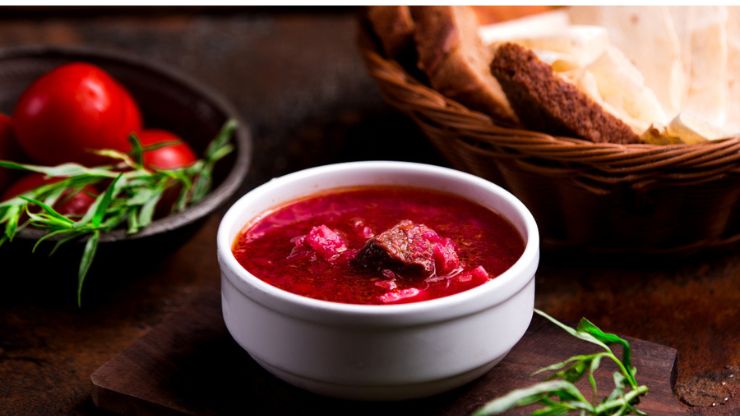Embark on a culinary journey as we delve into the art of crafting Fermented Salsa—a delightful twist on the beloved classic. In this guide, we’ll explore the transformative magic of fermentation, turning ordinary salsa into a flavor-packed, probiotic-rich masterpiece.
Discover the science behind fermentation, the importance of fresh ingredients, and the step-by-step process that elevates traditional salsa to new heights. Uncover the secrets of balancing flavors, infusing creativity into your recipe, and savoring the patience-driven rewards of fermentation.
This blog promises to be your go-to resource for creating a vibrant, gut-friendly salsa that not only tantalizes your taste buds but also adds a healthy twist to a time-honored favorite. Get ready to elevate your salsa game and embark on a flavorful adventure!
Table of Contents
ToggleFermented Salsa Recipe
Ingredients:
- 5 ripe tomatoes, diced
- 2 bell peppers (any color), finely chopped
- 1 onion, finely diced
- 3 cloves garlic, minced
- 1-2 jalapeños, seeds removed and finely chopped
- Handful of fresh cilantro, chopped
- 1 tablespoon sea salt
- 1 tablespoon sugar
- 1 tablespoon whey (optional, for added probiotics)
Instructions
Prepare Ingredients
Preparing the ingredients is a crucial first step in crafting a delicious batch of fermented salsa. Start by selecting five ripe tomatoes, ensuring they are firm and free from blemishes. Dice them into small, uniform pieces for a consistent texture. Move on to two bell peppers, choosing any color that appeals to you, and finely chop them. A single finely diced onion adds a savory depth to the salsa, while three cloves of minced garlic bring a rich, aromatic flavor.
For a touch of heat, finely chop one or two jalapeños, making sure to remove the seeds. Finally, gather a handful of fresh cilantro, chopping it finely to infuse the salsa with its distinctive herbaceous notes. This meticulous preparation guarantees that each ingredient contributes harmoniously to the overall flavor profile, resulting in a salsa that is both vibrant and well-balanced.
For More- How to Use Fermented Herbs in Recipes
Create Brine
Creating the brine is a pivotal step in the process of making fermented salsa, as it lays the foundation for the flavors to develop and the vegetables to ferment. In a bowl, combine one tablespoon of sea salt and one tablespoon of sugar with two cups of filtered water, ensuring that the salt and sugar fully dissolve. This simple yet essential mixture serves as the catalyst for the fermentation process, promoting the growth of beneficial bacteria and infusing the salsa with a tangy depth.
The brine not only enhances the taste but also acts as a preservative, allowing the salsa to stay fresh during fermentation. As you mix these elements, you’re not just creating a solution; you’re setting the stage for the transformative journey that will turn your ordinary salsa into a probiotic-rich, flavor-packed delight.
Combine Ingredients
With the brine ready, it’s time to bring together the vibrant array of ingredients that will form the heart of your fermented salsa. In a spacious glass or ceramic bowl, combine the diced tomatoes, finely chopped bell peppers, diced onion, minced garlic, chopped jalapeños, and a generous handful of fresh cilantro. This amalgamation of colors, textures, and aromas sets the stage for a salsa that is not only visually appealing but also bursting with complex flavors.
The careful combination of these elements ensures a harmonious blend, with each ingredient contributing its unique character to the mix. This step marks the beginning of the salsa’s transformation, as the ingredients mingle and prepare to undergo the fermentation process, promising a culinary adventure that goes beyond the ordinary.
Pack into Jars

Once the flavorful amalgamation of ingredients is achieved, the next step in crafting your fermented salsa is to carefully pack it into clean, glass jars. Take the time to press the mixture down firmly, ensuring that there are no air pockets that could impede the fermentation process. The goal here is to create a compact environment for the vegetables, allowing them to release their natural juices and interact with the brine for optimal fermentation.
Leaving about an inch of space at the top of the jar is essential to prevent overflow during the fermentation process. This packing stage not only sets the foundation for successful fermentation but also showcases the vibrant medley of colors within the jar, offering a visual preview of the flavorful transformation that awaits.
Don't just scroll, subscribe!
BuzzTrail's unique web-stories are the cure for boredom you've been waiting for.
Add Brine
With the ingredients snugly packed into the jars, the next crucial step in the journey to crafting fermented salsa is to generously pour the prepared brine over the vegetable mixture. The brine, a carefully balanced blend of sea salt, sugar, and filtered water, serves as the catalyst for fermentation, infusing the salsa with both flavor and preservation. It’s imperative to ensure that the vegetables are fully submerged in the brine, creating an anaerobic environment that encourages the growth of beneficial bacteria.
Leaving a bit of space at the top of the jar prevents spillage during the fermentation process. As the brine covers the colorful array of vegetables, you’re not just adding a solution; you’re initiating a transformative journey that will enhance the taste and nutritional profile of your salsa, turning it into a probiotic-rich delight.
Weight Down Vegetables
To facilitate a successful fermentation process and ensure optimal contact between the vegetables and the brine, the next step is to weight down the ingredients within the jars. Placing fermentation weights or a clean, heavy object atop the salsa serves a dual purpose: it keeps the vegetables submerged in the brine, preventing undesirable exposure to air, and aids in the extraction of juices.
This gentle pressure encourages the release of natural liquids from the vegetables, creating an environment rich in flavors. As you carefully apply this weight, you’re not merely ensuring proper fermentation; you’re actively participating in the development of the salsa’s distinctive taste and texture. This step is essential for achieving a consistently delicious batch of fermented salsa, transforming the diverse ingredients into a harmonious blend of flavors.
Fermentation
The fermentation stage is the heartbeat of transforming your salsa into a flavorful, probiotic-rich delight. After sealing the jars with either a lid or cloth, allow them to sit at room temperature for a period ranging from 3 to 7 days. Throughout this time, the magic of fermentation unfolds. Beneficial bacteria thrive in this anaerobic environment, breaking down sugars in the vegetables, and producing lactic acid. This process not only imparts a tangy depth to the salsa but also preserves it naturally.
Daily checks, including pressing down the vegetables to release any trapped air bubbles, are essential. As the days progress, witness the vibrant colors intensify and the flavors evolve. Fermentation is an art of patience, and during this period, you’re not just waiting; you’re nurturing the development of a unique and tantalizing salsa that transcends the ordinary.
Taste Test

After the initial 3 days of fermentation, embark on the exciting phase of taste testing to gauge the salsa’s flavor profile. Using a clean utensil, scoop a small portion from the jar and savor the evolving complexities. The tanginess, combined with the original sweetness of the vegetables, should create a harmonious blend. If the salsa has reached your desired level of fermentation, with the ideal balance of flavors, it’s time to transition to the next step.
However, if you prefer a more pronounced tang or a deeper complexity, let the fermentation process continue for a few more days, testing periodically until the desired taste is achieved. This interactive step allows for a personalized culinary experience, ensuring that the fermented salsa aligns perfectly with your unique palate preferences.
Store and Enjoy
Once your fermented salsa has reached the desired level of tanginess and flavor complexity, it’s time to transition from the fermentation stage to storage. Carefully move the jars to the refrigerator, where the cold temperature slows down the fermentation process, preserving the salsa’s freshness. Proper storage ensures the longevity of your creation, with the fermented salsa maintaining its vibrant flavors for up to a month.
Now, the moment has come to savor the fruits of your patient culinary endeavor. Enjoy this probiotic-rich, flavor-packed salsa as a condiment, a topping for tacos, or alongside your favorite dishes. Let the unique taste and health benefits of your homemade fermented salsa elevate your culinary adventures, making each bite a celebration of creativity and wholesome goodness.
Also Read- 3 Fermented Cherry Tomato Bomb Recipes
Conclusion
Summarize the transformative journey of making fermented salsa, underscoring its fusion of tradition, creativity, and health benefits. Invite readers to share their own variations and experiences, fostering a sense of community around this delicious twist on a classic. Happy fermenting!
This comprehensive guide ensures readers embark on a culinary adventure, creating not just salsa but a masterpiece that tantalizes taste buds and promotes a healthier lifestyle.
FAQs
Why ferment salsa?
Why ferment salsa?
Fermenting salsa not only enhances its flavor but also adds probiotics, promoting gut health and increasing nutritional value.
How long does the fermentation process take?
How long does the fermentation process take?
The fermentation duration varies but typically ranges from 3 to 7 days. Taste testing guides when it reaches your desired flavor.
Can I adjust the spice level?
Can I adjust the spice level?
Absolutely! Experiment with the jalapeño quantity or try different pepper varieties to tailor the spice level to your liking.

